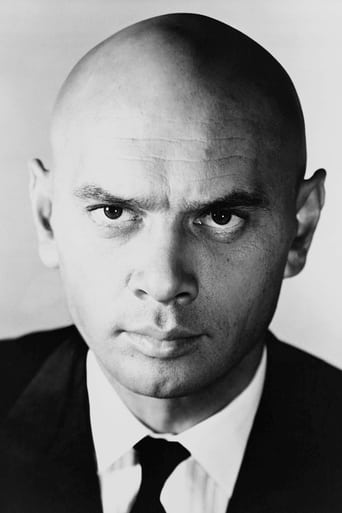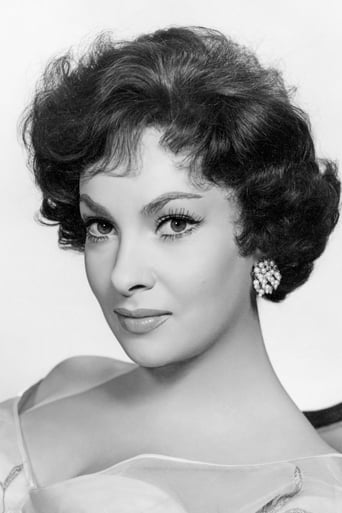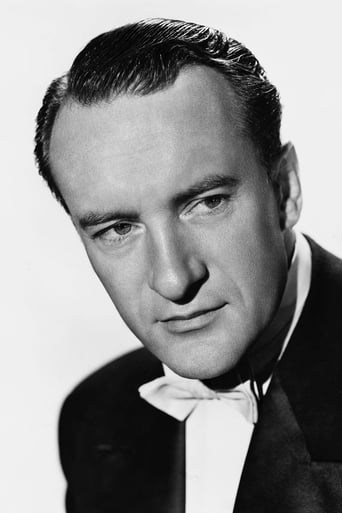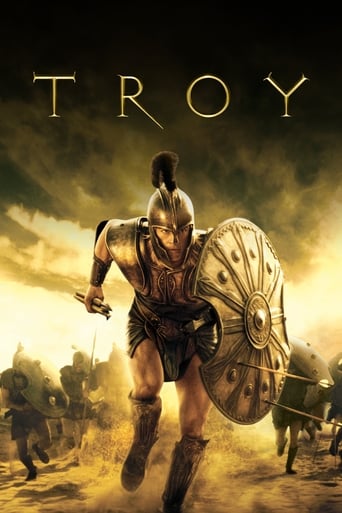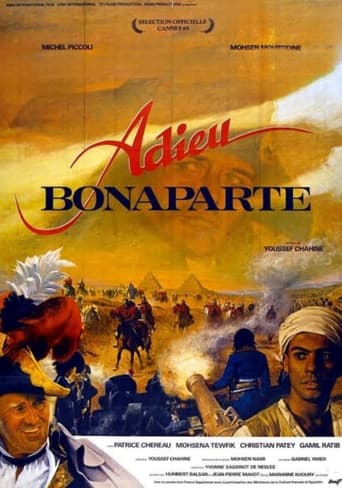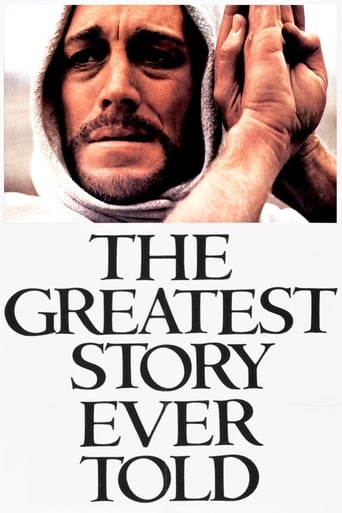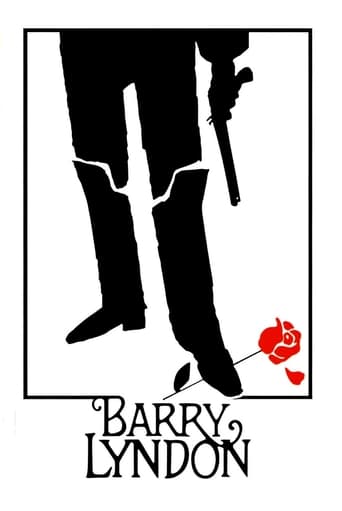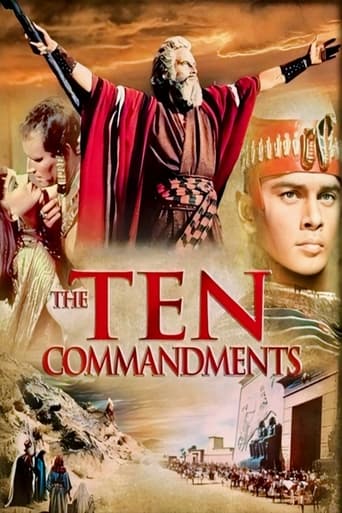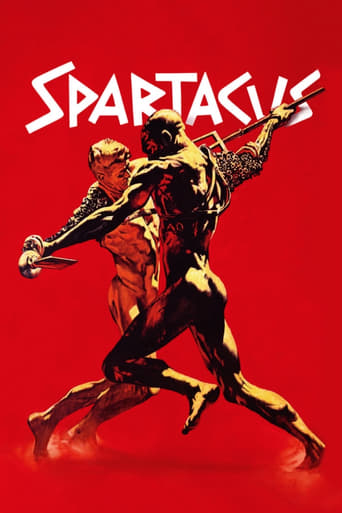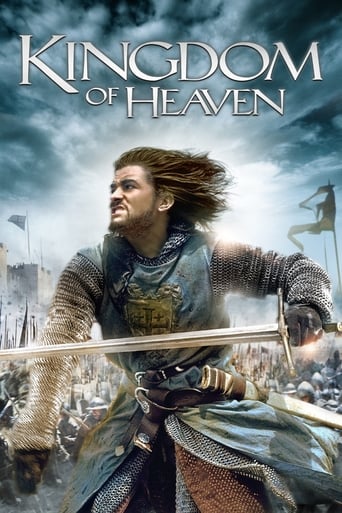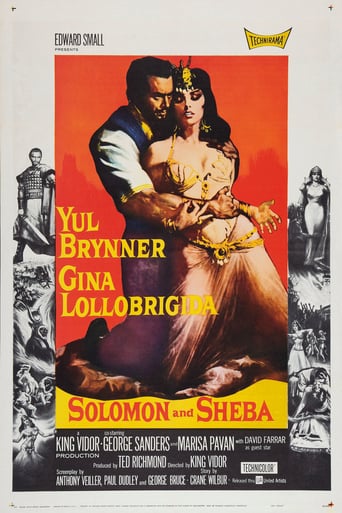
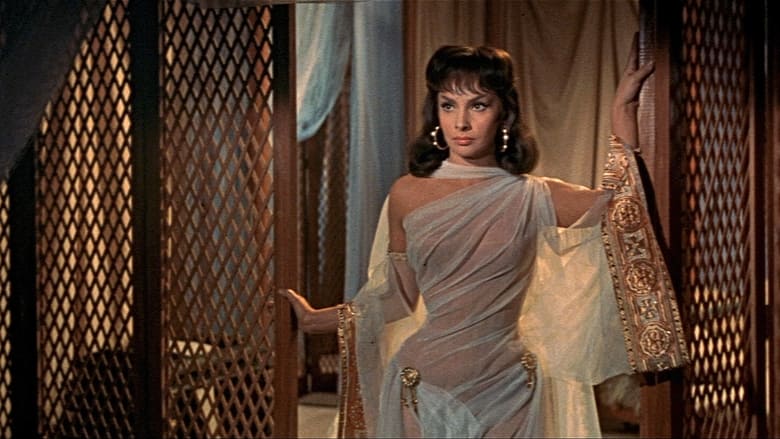
Solomon and Sheba (1959)
Near death, King David has a vision that his poet son, Solomon, should succeed him, rather than hot-headed Adonijah. Furious, Adonijah departs the court, swearing he will become king. Other rulers are concerned that Solomon's benevolent rule and interest in monotheism will threaten their tyrannical, polytheistic kingdoms. The Queen of Sheba makes an agreement with the Egyptian pharaoh to corrupt Solomon for their mutual benefit.
Watch Trailer
Cast
Similar titles
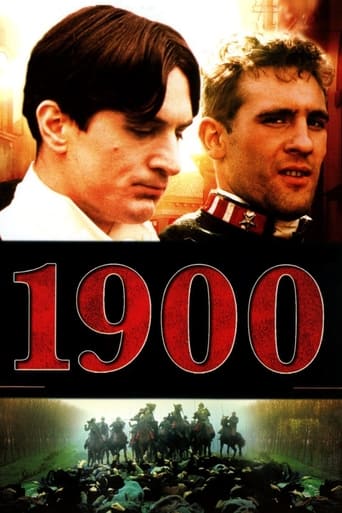
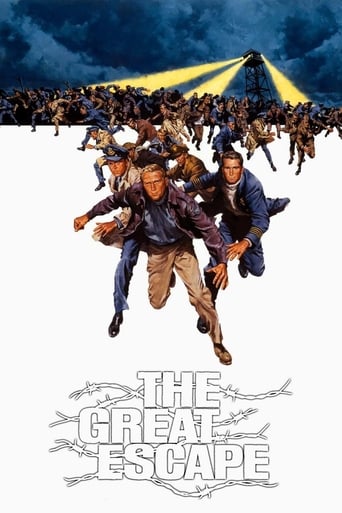
Reviews
Really Surprised!
Load of rubbish!!
A lot more amusing than I thought it would be.
One of the worst ways to make a cult movie is to set out to make a cult movie.
As a real fan of 'La Lolla' (meaning I believe she is a fine actor as well as a drop dead gorgeous looking woman) I recall the anticipation in originally viewing this movie. Unfortunately the film is too long - surely it could have been cut by 30 mins or more. Battle scenes in particular were way too lengthy and somewhat mundane - the all too obvious fake horses and soldiers 'forever' falling into the great ravine prompted much laughter at the time! In addition, the acting of George Sanders and Marisa Pavan was below standard, indeed Sanders was completely miscast and fairly woeful for the most part. It does not concern me greatly that the story in the film did not even closely follow the biblical narrative nor that the accents were a hotch-potch nor (as one critic here points out) that the soldiers' shields would have been of a different design! The central concern is that the plot provides a good yarn, the cinematography is excellent, the musical score is appropriately utilised and the two leading characters are played well by Yul and Gina. It was a box-office success, so despite its faults, the movie had lots of admirers. And apart from the obvious sex-appeal of La Lolla, the fact that her portrayal was suitably conniving, intelligent and sexually alluring played a large part in the film's overall appeal.
I marked "spoilers" but other reviewers have already mentioned the highlights."Solomon and Sheba" was made in 1959, the same year as "Ben Hur." Yul Brynner (with hair!!!) plays a Solomon so wise and serious he never smiles, not even when he's kissing the Queen of Sheba, portrayed by Italian sexpot Gina Lollobrigida. The screenplay bears no relation to Scripture, grabbing biblical names and running with them. In this tale, Sheba (her given name is never provided) is an agent of the Egyptian pharaoh, visiting Solomon in order to find a way to trip him up so her sponsor can gain the upper hand in the ongoing rivalry between the two kingdoms. She determines that a successful seduction will cause the Israelite king to break the Covenant, destroying his popular support and splintering the Twelve Tribes into vulnerable factions. Meanwhile, Solomon's jealous and militaristic older brother (George Sanders) would welcome any excuse to grab the throne he feels he was cheated of.Solomon, being the wisest man on earth and all, knows Sheba is up to no good. He can't resist falling for her undeniable charms anyway, even though he's got a harem stuffed with scantily clad beauties. Over the protests of Nathan the prophet and the tribal leaders, he agrees to allow Sheba to hold a festival in honor of her people's fertility god (the one she's been praying to for success throughout her seduction campaign). Solomon's struggle with temptation is the most realistic part of the movie. He broods alone in his room as the drums of the orgy begin outside, stalks moodily through the harem filled with lovely women eager for his attention, brushes off the admonitions of his devout, youthful ward (who confesses her own chaste love for him), and finally stumbles, dazed, to where the visiting Shebans are prancing around underdressed.Although there are several vigorous battle scenes between Egyptian chariots and Israeli cavalry and a final confrontation between Solomon and his scheming brother, the pagan fertility festival is the true climax (pun intended) of the movie. The king stands mesmerized as Sheba gyrates before him in a non-outfit that would do credit to one of Conan the Barbarian's girlfriends (according to the Internet Movie Database, Lollobrigida was nude from the waist up in the European version). Finally, they join the other crazed couples in running off into the bush to find a place to make whoopee. Just as they consummate their lust in a convenient cave, an angry Jehovah sends lightning bolts that zap the fertility idol into charcoal and smash the upper levels of his own ziggurat-like temple. The rubble-strewn Holy of Holies stands exposed for the rest of the movie, lit dramatically by a new divinely created skylight.Fortunately, my son was busy in the garage repairing my daughter's bicycle while all this was going on on screen. I'd been worried about the scene, which I'd previewed and found pretty racy even for today, especially in a supposedly religious movie. It must have been downright shocking in 1959, and apparently did negatively affect the financial success of the film.Does Solomon repent? Does Sheba repent? Do they really love each other? Do the Israelites manage to unite in time to beat the Egyptians? Hey, it's a Fifties biblical epic. But after that orgy (which makes the Golden Calf scene in "The Ten Commandments" seem positively dull by comparison), not much else really matters, not even the plots of George Sanders. On a positive note, God is active and involved throughout the story, even during the bittersweet ending. But none of it ever really happened.According to Wikipedia, the kingdom of Sheba was located either in modern Yemen (Arabian peninsula) or Ethiopia (immediately across the Persian Gulf). It may have encompassed both areas, as the nation's borders shifted around over time. Archaeological evidence is scarce but Ethiopian tradition claims the Queen of Sheba as one of their own.
I just saw Solomon and the Queen of Sheba, and I must express my total disagreement on how the story is told in the movie. first of all, I find it unfortunate casting, mainly referred to Adonijah, according to 1st Kings chapter 1, verse 6 (1st Kings 1-6), Adonijah was very good-looking, and George Sanders was well on in years and anything beautiful. following the steps in 2nd Samuel, of children born to King David in Hebron, the king's David firstborn was Amnon , Adonijah was the fourth child who has King David in Hebron of Haggith. In the film, Salomon kills Adonias (this fight was when died of a heart attack Tyrone Power, who was the first to embody Salomon), but it was not King Solomon who killed Adonias but according to 1st Kings 2-25, reads: "Then King Solomon sent by the hand of Benaiah son of Jehoiada, who attacked the (Adonias), and died." and so Hollywood producers always changing the stories as always, thinking only about money, how to get higher profits on their investments. personally I find it deplorable. I'm also in total disagreement with the queen Sheba history in the movie.
In cinema, we have always lost as well as gained. In the post war era we got a load of upcoming sprouts with new ideas. Changing social mores gave greater latitude in the kind of stories we could tell. And yet the older generation, for whom movie making was purer, unpretentious and above all visually orientated, were still alive and, once in a while, kicking.Now, Solomon and Sheba is a dead-looking production if ever I saw one. Even though it was released the same year as Ben-Hur, one of the most successful ancient world epics ever made, you can still see the format is getting a little tired. This isn't so much Sunday school story come-to-life as cheap and somewhat half-hearted excuse for a bit of bare flesh and erotic dancing of the kind that they really went in for in the 50s. For a production of this kind, it is woefully low budget. The sets look like you could punch holes in them, and the costumes look like they were cut up from old curtains (net curtains in Gina Lolobrigida's case).The screenplay too is utter trash. Complete changes in character and drive are crammed into single scenes. The dialogue is not bad as such, it is merely bland and unmemorable. And then there are the actors. Yul Brynner, standing in for Tyrone Power (who was dead at the time) giving a reasonably understated performance, but doing little more than sitting around looking thoughtful. Screen brother George Sanders simply looks worse the wear for age, and it appears likely he simply couldn't be bothered any more, especially for something like this. Finlay Currie, now something of a fixture in the biblical flick, makes a brief and fairly run-of-the-mill appearance. The rest of the cast are so dull they are not even worth a mention.But does any of this really matter? Well, of course yes it does to some extent. We expect a little quality control even in a picture like this. But when you're watching a colourful adaptation of some millennia-old mythology, it's acceptable for realism and dramatic intensity to play second fiddle to the power of the images. And this is where our afore-mentioned old-school approach comes in.This was the final feature film of veteran director King Vidor. Vidor had been handed one crummy project after another for the past decade or so, and yet unlike Sanders he never lost his professional interest – in spite of a rather troubling experience on this particular production. Solomon and Sheba is packed with the kind of visual splendour that Vidor had been crafting since the early 20s. In the battle sequences he works round the small number of extras by focusing on dynamic snippets of action, often having fighters surge towards the camera for that added impact on the audience. In Brynner and Lolobrigida's boat scene the eerie willow fronds add a layer of atmosphere that makes up for any deficit in the acting. All of this is enhanced by the sublimely moody cinematography of Freddie Young – the only other outstanding name in the production crew. Best of all Vidor does this without resorting to any fancy camera tricks.Is Vidor's compelling imagery enough to save Solomon and Sheba? Not quite. Nothing could really turn back the tide of paltriness that washes over every other aspect of the picture. But Vidor's efforts at least make it easy on the eye. With that in mind, you can quite happily enjoy this as pretty no-brainer entertainment, just as you can the pictures of Cecil B. DeMille (although Vidor is far more surreal and spiritual then the earthy DeMille). If you keep your eyes peeled for things like that jolly conga line snaking its way through the surprisingly risqué pagan rite, or a soldier getting a round shield pinned to his face like a bronze-age emoticon, you might even find a few laughs in this ostensibly serious feature.
